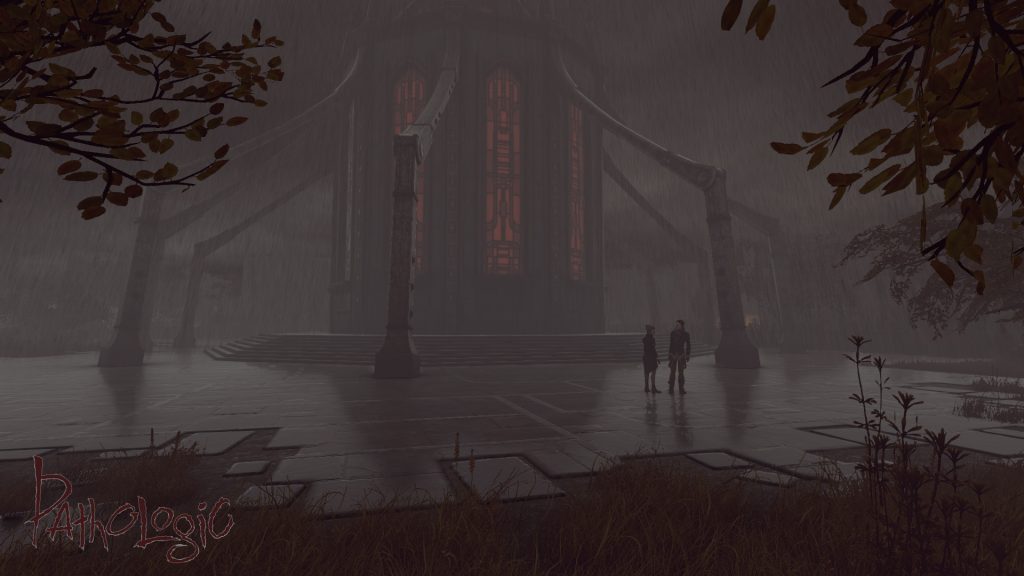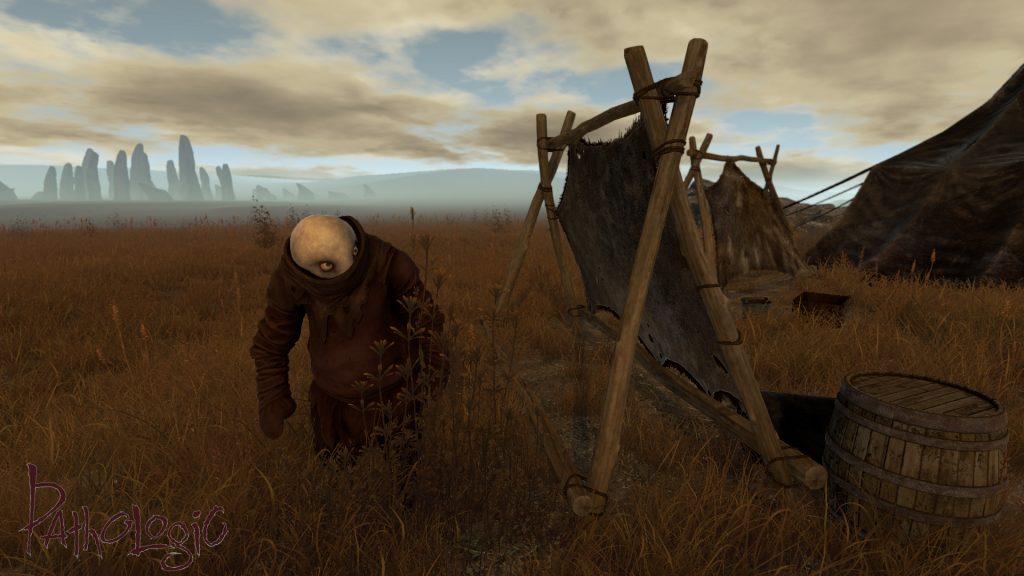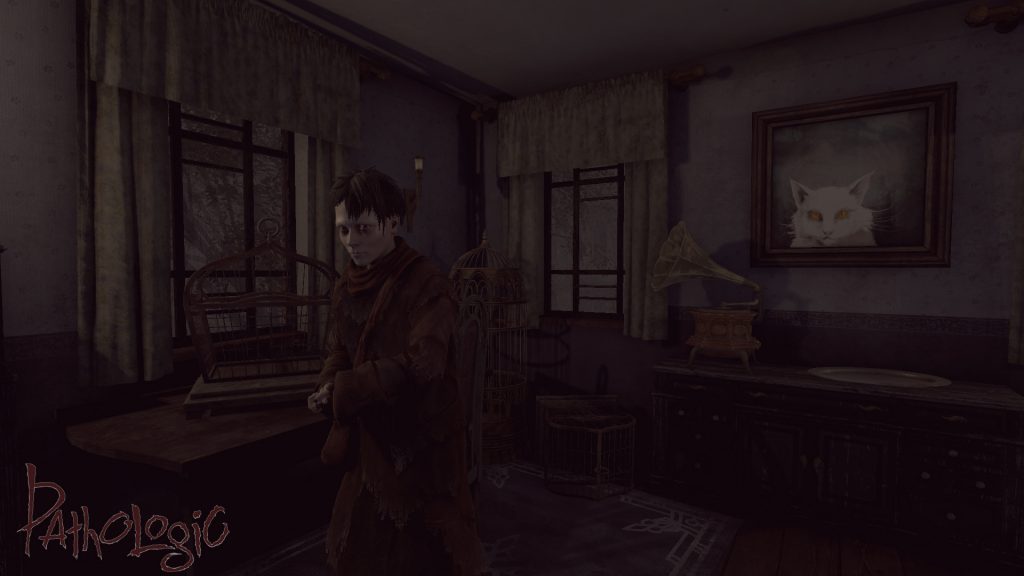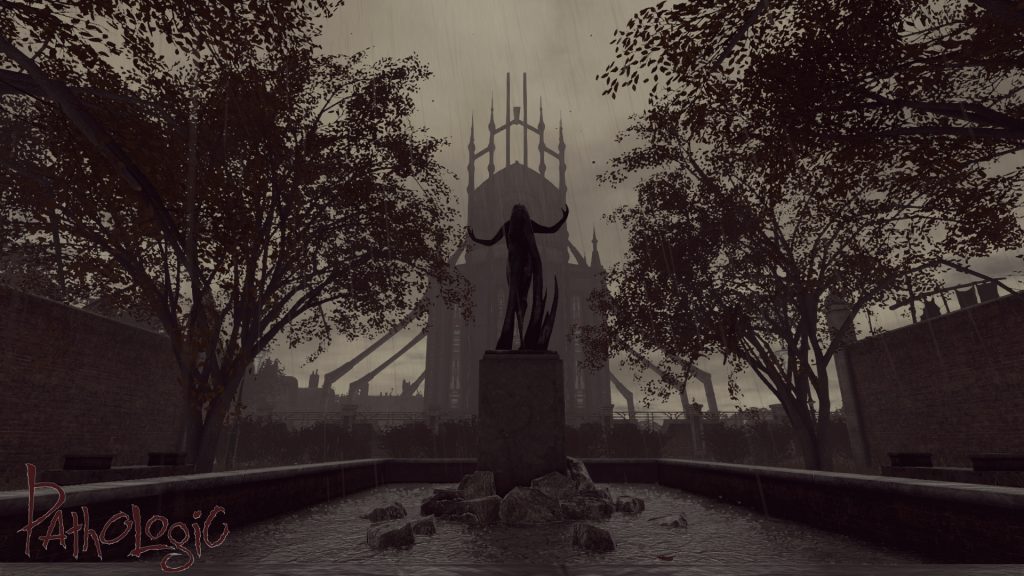The new Pathologic will be different from the original one—that much we have already said. But on the scale of “totally new characters” to “just kinda retexturing the Polyhedron a bit”, what scope of changes are we talking about here?
Short answer: …is pointless, is it not? “Well, many things will change, but we’ll preserve the core concepts and, like, characters and stuff” just doesn’t cut it. Not anymore. We feel it’s long past due for us to give you the long answer—which will also inevitably have to be compressed, since the truly detailed explanation takes ~70 hours and demands you play the game itself. Still, we are going to try. We’ve even ordered an additional pack of bullet points to go with the customary verbosity.
First thing first: it’s not final, but it’s a true, real, honest-to-god screenshot
Long Answer
Some things never change. The things that we’re keeping are, first and foremost, structural—the ones that would have likely been included as bullet points on the back of a CD case with the game:
- Twelve days in a remote Steppe town;
- same three protagonists, whose stories complement one another in much the same fashion (but more coherently);
- same NPCs* (this was not a real asterisk, but just our way of pointing out that they’re not completely the same—see below);
- the world is still three-fold; Pathologic remains a game about three ideologies and worldviews clashing;
- at its gameplay core, Pathologic is still a survival game—and a rather hard one at that;
- the state of your character is still represented by a number of bars, so you’ll have to do a lot of resource juggling (no unnecessary streamlining here);
- your main resource and main opponent is still time itself—you’ll have to manage it carefully;
- the lore and setting will be explored deeper, but no major changes here either (the Steppe people still worship bulls, have a cult of body, and use a sacred alphabet).
This is all relatively straightforward; as you can see, the CD-case short description of the game would likely remain the same. The devil, however, is in details.
These are real in-game screenshots, by the way
Then there are things that we’re keeping, but tweaking, reinterpreting and changing to an extent that varies in different cases. The screenshots you’re seeing and the visual style are the simplest examples of that. Do they follow the same set of premises as the style of original Pathologic did? Yes. Are they different? Obviously.
Here are other aspects of the game that fall under the same category:
- NPCs. They keep their names, general appearance, and social status; most also keep their role in the story. They are, by and large, the same people. However, they may get additional backstories, unexpected development, and—in some cases—even find a different mission (the latter is mostly relevant for the characters who were a bit underdeveloped in the original game). There may be twists, but no heel-face turns. A good example would be Aspity not only serving as the keeper of Artemy’s inheritance and protector of the Worms, but also getting her own agenda inside the Kin’s politics.
- The Town. While the general layout remains the same (with points of interest located more or less in the same areas, i.e. the Theatre being in the center, the Cathedral looming across the Kains’, etc), the details will change—as dictated by the Town Expanded stretch goal that we’ve reached. Streets can shift, random houses multiply, new paths emerge. There’ll be no drastic changes, but you will more than likely have to explore some areas anew. (The game will obviously be balanced with all that in mind.)
- The plot. This one is hard to explain without spoilers. Basically, the main characters’ storylines remain the same, but the particular events that they’re woven of can be very different. Say, the Haruspex still begins the game as an outcast who is widely hated in the Town; his starting goal is still to fix this—but the redemption options may be different. However, their goals and motivations remain the same, as do their general modi operandi.
- “Extras.” The streets will still be filled with a number of character types, but their cast (so to speak) will change. Some of the new characters pay obvious homage to the original ones or are simply their revamped versions, while others are completely new.
- Your activities. The list of activities will mostly remain the same (you can barter, talk, fight, explore, talk, burgle, talk, lick your wounds, talk some more), but that doesn’t mean that the process itself will feel the same. It is very likely that after fine-tuning and rebalancing the dangerousness, importance, and risk-reward ratio of some activities will change (we’re looking at you, oh way-too-farmable-fights from the old game). Consequently, they will have different roles in your basic routine.
Feast your eyes on some more dilapidation before we move on to the most nerve-wracking part: the things that will change completely
The Things that will Change Completely
Allow us to begin with the things that were present in the original Pathologic but will not be transferred to the new game.
- Texts (as in actual word-for-word dialogue). Before you say, “Hey, I liked those,” consider this: the great, inspired dialogue that many of you remember mostly belonged to the Bachelor’s story; the Haruspex’s and the Changeling’s plots, however, were written hastily and even recycled texts. Also, newly-introduced events obviously demand new dialogue. Finally, there is one more reason for this change (apart from Nikolay’s constant self-criticism, that is); more on that below (here, have an asterisk: *). We’ll keep the texts that fit with the new game though—it’s not like we’re on a crusade to rewrite everything humanly possible.
- The music. While keeping the mood of the soundtrack, we’re rewriting it completely. Various places and situations will still sound different, but now they’re also be colored by which character you’re playing as; each of them perceives the world differently, and now the music represents that too.
- The photos. It may seem like a minor detail, but characters having real faces was an important part of original game’s identity. But… it just doesn’t work now. In the old game, the visuals were very approximate; they obviously were not representing the photos realistically (this trope is commonly used in old-school RPGs, for example). Now, however, the gap between them is much smaller, and using photos (with models somewhat closely resembling them) feels like a guaranteed trip down the uncanny valley. Most importantly, though, while some of the new models are based on the original faces, we wanted to have more creative freedom to represent characters better—which sometimes means changing their facial features completely and without real-life prototypes.
- The Bound/Adherents death mechanics. You may have noticed that we have avoided using the word, resorting to a blander “NPCs”. This is because the Bound are no more—after a fashion. All the characters will remain in the game, as will the idea of people being somehow connected on a level beyond mundane; the word and concept may also remain. What will be gone completely, though, are the mechanics. You will no longer have to save them to secure a good ending (as though they were your hit points and not, you know, people); they will no longer die by the end of the day if you fail to do some arbitrary amount of questing. Both of these mechanics were in the game for a reason, but the goals they were aiming at can be achieved more efficiently. People dying because you have failed to complete an important task (that was not in any fashion connected to them personally) added to the chaotic atmosphere of a doomed town; having to preserve them for a “good” ending burdened you with responsibility. Both of those will stay. You will be relied upon and depended on; you will be the center of a small circle. But it will be done in a less straightforward and dry fashion.
- And while we’re at it, Main Quests. Seeing how there is no more obvious and straightforward punishment for the players who have failed to complete the main quest of the day… there will be no more day-to-day main quests at all. The protagonist’s mission will not be told as a chain of important daily tasks, but rather as a series of “arches” that span several days each. You will be able to complete an “arch” whenever you can (which means that yes, you can roleplay as a student who finishes everything a minute before the deadline). It may seem very novel, but in reality mostly allows for more natural goal-setting (obligatory asterisk, as there’s more on that below: *). Does this mean the system will become more forgiving? Ha ha. Will there be punishment for failing to move the story forward? Ha ha ha. (Not ending-breaking though.)
- The interface. This may have belonged to the “keeping, but changing” category since our general approach to the interface remains the same. We love that the old Pathologic keeps the screen clean, and this is something you can reasonably expect. But—and this is a big “but”—we also want the interface itself to become a better storytelling tool and allow for more interaction with it. For example, the inventory will be grid-based rather than item-based; let the rest remain unspoiled for now.
- Exploits. Yes, we know that running diagonally is faster. Yes, we know that you know how to get rich by the end of Day One. Yes, realistically speaking, we know that eliminating the exploits of the old game will just lead to someone finding new ones—but we’ll do our best to make the game less exploitable. For example, you won’t be able to stock up a ridiculous amount of resources. It just might be that you’ll have to play fair.
Finally, there is a number of elements that were not present in the original Pathologic but will be introduced in the new one.
Most of the points on this list deserve (and will get) their own separate updates since introducing and explaining new things can’t be as simple as writing a single paragraph. (As an aside, yes, we’re returning to the normal update schedule.) Still, for now, here they are in paragraph form.
- The robust disease mechanics. The original Pathologic was a bit of a paradox in this regard: it was a game about a plague that featured rather linear plague mechanics. While there technically were two bars associated with the disease (Infection and Immunity), they worked in a very straightforward manner (low infection = good, high = bad, Hulk = smash) and only affected you. They were a challenge, but not a story. In the new Pathologic, we’re introducing a way, way less one-dimensional disease system. It will work dynamically. It will change things. It will become a separate layer of the narrative. The desire to spoil some of its more curious aspects is excruciating, but we’ll still our hands. One example is that you will not necessarily be always up to date with the processes happening within your own body—and evaluating your own state will become a part of the game.
- The robust disease mechanics, part II: outside your body. The whole dualism of the same entity operating within your body and in the outer world will be explored way further. The Plague outside you will also become much more complicated and treacherous. Without spoiling much, let’s just say that the things you’re used to being safe can suddenly become deadly… and that doesn’t just mean the things that had the ability to infect you in the original game.
- The fights. It’s not just the mechanics that are being reworked, but also the role of the fights in your day-to-day routine. For one, the idea that every fight has to end in someone’s death operates very much under video game logic; in real life (and in the new Pathologic, of course) you are way more likely to be beaten or mugged than straight out killed.
- Events instead of quests and tasks. Have you ever met a person—only to be asked to repair their torn relationship with a family member two days after you’ve first seen one another? And to be freaking paid for your troubles? It happens once in a while—but video games seem to believe that this is normal behavior. It’s not. Moreover, in real life, people tend to set their own goals. We’re introducing such a system to Pathologic—a system where you will very rarely be asked to do something. Most oftenly, you will simply be made aware of events unfolding, but it will be up to you whether (and how) to participate. That does not mean that there’ll be no rewards—just like in real life, proactivity leads to certain benefits. But figuring out what to do will be part of the challenge, the story, and (dare we say) the fun. More on that in further updates. (Incidentally, this is the snippet that most asterisks were leading to.)
- You will influence the NPCs’ fates. In the old Pathologic, there were precisely two cases of you choosing the fate of the Bound people—and it was a life-or-death choice in both cases. Well, now you’ll get a chance to become more involved. Did you participate? Did you set them straight? Did you offer an advice that lead them to an unfortunate outcome? There’s nothing groundbreaking here, but being able to influence the fates of those around you fits so well with the structure of Pathologic that we couldn’t help introducing it.
We’ve barely scratched the surface, of course, and this update is undigestibly long already. Most of these aspects will be elaborated upon in further updates. But hopefully you can see the general principle: we keep the solid things (like the characters), tweak the relationships between them (like the particular events), change the presentation and rework the mechanics.
There is also, of course, the matter of the game’s topic and its meta-narrative. It has indeed… shifted—this is not a river that you can step into twice. We will discuss this in more detail later, but perhaps the best way of talking about the core ideas is by just making the game. This is how art operates, after all. If we could simply spell out the things we want to tell, there wouldn’t be a need to complicate matters by making video games.
P. S.
We’re closing the crowd funding in a month (yes, it has still been open). The Lucid Dreaming stretch goal is ~85% complete, and it’s up to you whether it’ll make it into the game. (As usual, any extra funds will go into the production.) We’d love to enjoy the hopeful uncertainty some more, but the time has come to set everything in stone.
We promised to warn you in advance, so consider yourself warned.







